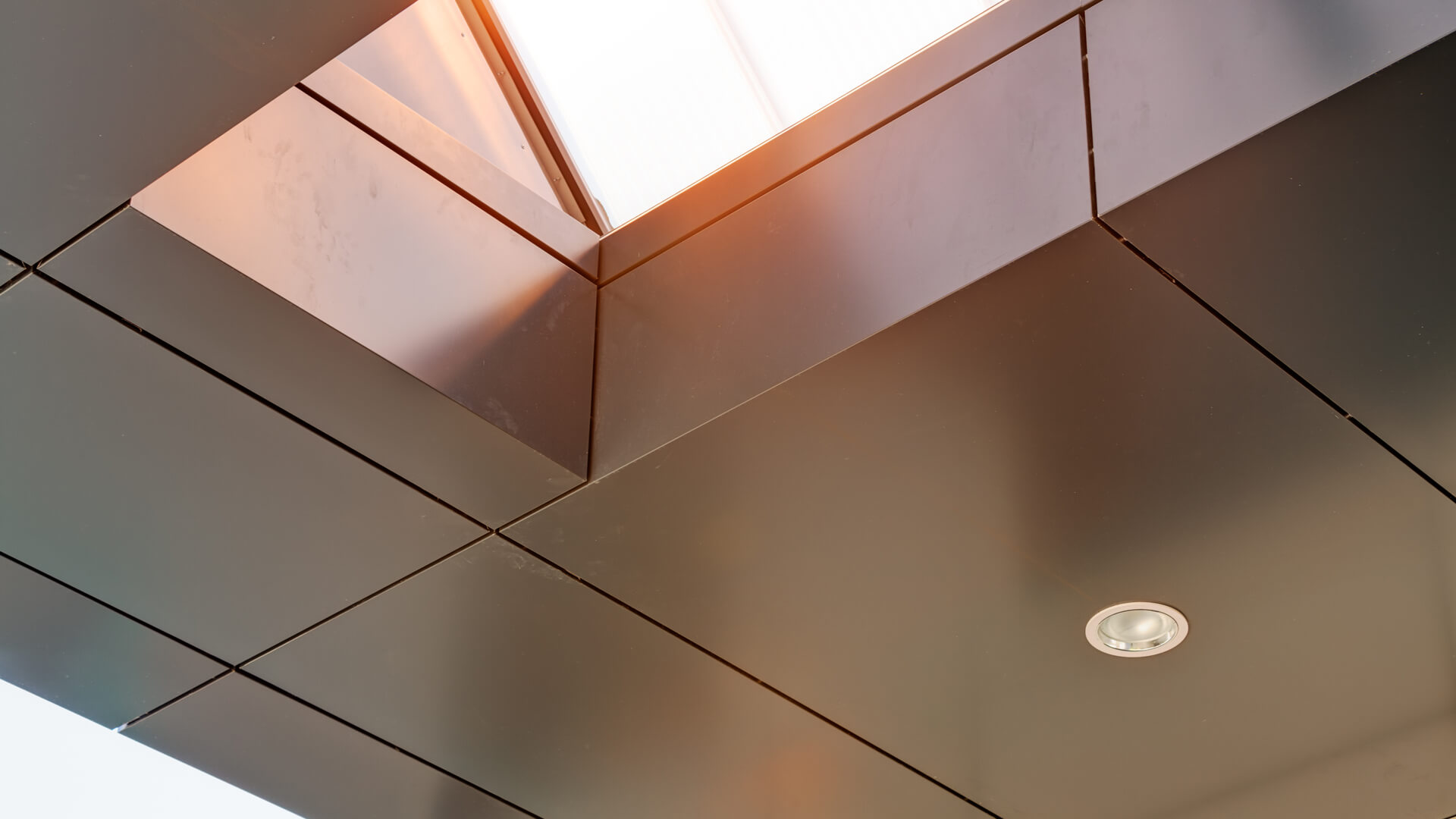Aluminium is widely used in architecture for its innate qualities and its malleability which, combined with different treatments – such as continuous anodising -, makes this metal ideal for various applications. Lightweight, resistant, elegant and eco-friendly, anodised aluminium for architecture and construction is supplied in sheets and coils, which can take an infinite number of shapes. Find out how to choose the most suitable materials for your projects, depending on the functions they have to perform.
From construction to design: what is an aluminium panel and where can it be used?
Aluminium panels and aluminum sheets can be easily customised to fit a project. The material is easy to work with, so it can be bent, curved, moulded and roll-shaped, to name a few.
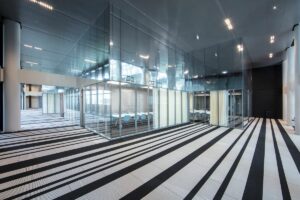
- Aluminium false ceilings;
- Aluminium cladding panels and sheets;
- Aluminium wall panels;
- Plates for switches;
- The profiles of doors and windows or furniture pieces.
For their many uses in architecture and construction, aluminium sheets can also be coupled with other materials to create different types of panels. Aluminium panels can feature various backings, such as continuously produced aluminium composite panels (ACP).
This type of panel consists of two thin aluminium sheets bonded to a non-aluminium core. The core material can be made of polyethylene (PE), polyurethane (PU), or fire-resistant (FR) mineral core, for example. This unique sandwich structure gives aluminium panels exceptional strength and durability while maintaining a lightweight profile. Composite panels made by anodised aluminium allow for increased rigidness and mechanical strength of the panels and can be integrated with many building systems. The anodised layer also protects the material from corrosion and ensures long-lasting durability.
Aluminium types and properties
When thinking about aluminium sheet designs there are several factors to consider, but also numerous opportunities in terms of choice.
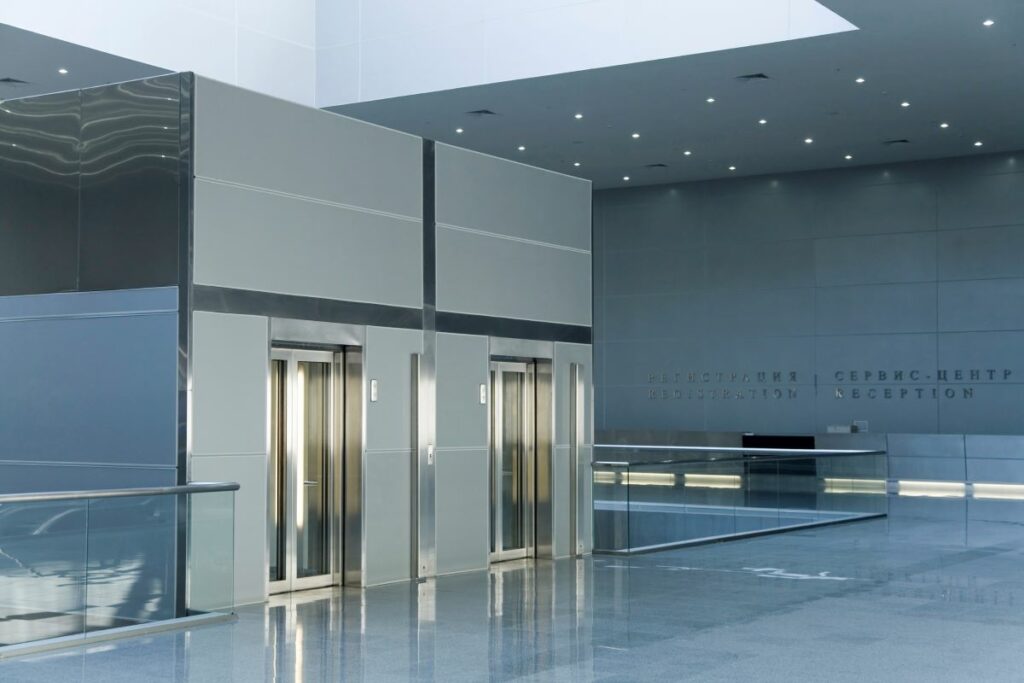
There are, in fact, different types of aluminium (or aluminium alloys).
Alloys are created by blending two or more metals to enhance desirable characteristics such as increased strength or higher melting points. Different aluminium alloys and different treatments allow to create optimised surfaces for the needs of a specific application in terms of resistance, corrosion, combustibility, reflection, but also colour.
For example, the alloys of the 1000 series – which have an aluminum content of 99% or higher – are particularly suitable for creating specular panels which can be used in interior applications for their pleasant and elegant visual impact, or as a substitute for glass surfaces as a less fragile alternative.
The 5000 series alloys, on the other hand, are widely known for their exceptional resistance to corrosion, remarkable versatility, moderate strength, and weldability, and are used for both indoor and outdoor applications.
Benefits of anodising for aluminium panels
The treatment to which these aluminium alloys are subjected plays a key role in the development of the panels, as it allows various characteristics of the metal to be enhanced, as well as conferring additional properties necessary for the application or, for example, to comply with regulatory requirements.
Aluminium anodising is a process used to enhance the surface properties of aluminium by creating a protective oxide layer that protects the material both from external agents and scratches or abrasions. The thickness of the layer may vary depending on the application for which the material is intended to be used.
One of the additional benefits provided by the oxide is the possibility to colour the surface, thus adding aesthetic value, and giving it optical properties, that raw aluminium does not have or that need to be optimised, such as heat exchange properties in ceilings for air conditioning.
Depending on the properties that the surface must have, the colour of the panel is also a factor to consider. The treatment must therefore be adequate not only in terms of the thickness of the oxide layer, but also in terms of the colour pigments that will be deposited during treatment. For example, brighter colours (blue, red, green) are suitable for interior applications, while gold, bronze and black tones can also withstand outdoor environments.
Architectural aluminium panels, which are the benefits?
Architectural aluminum panels offer numerous benefits. They are widely used in the construction industry due to their remarkable properties, making them a popular choice for architects, contractors, and builders alike.
One of the key advantages of using architectural aluminum panels is the fact that aluminum is a lightweight material, which makes handling and installation much easier and more cost-effective. This characteristic is particularly beneficial when constructing large buildings or structures where weight considerations are crucial. The reduced weight also allows for faster installation, saving time and labour costs.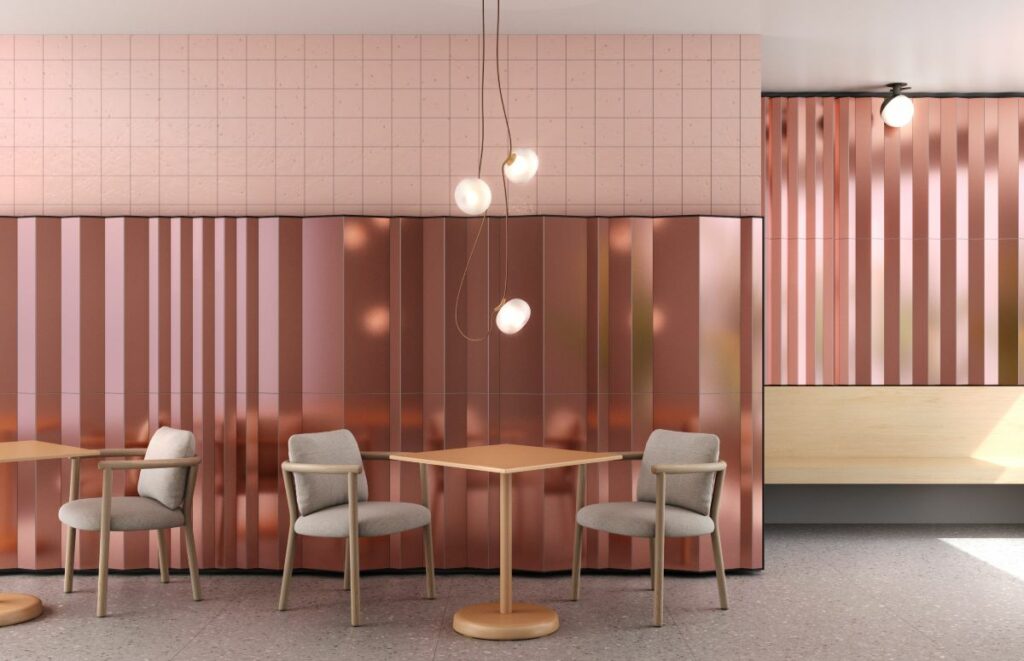
Versatility is another key advantage of architectural aluminum panels. These panels come in a variety of finishes, colours, and designs, allowing architects and designers to create visually appealing and customised structures. Whether they are seeking a sleek and modern look or a more traditional and textured appearance, aluminum panels offer a wide range of options to suit any architectural style or preference.
Choose the perfect aluminium finish for your project on Almeco’s e-commerce
In addition, aluminium cladding sheets and panels offer a valid solution in those applications where fire resistance is required. Aluminium, in fact, is a non-combustible material, meaning it does not catch fire or contribute to the spread of flames. This makes it an excellent choice in fire-resistant applications, as it helps to limit the potential for fire to spread.
It must be remembered, however, that even in this case, the treatment process leading to the final panel is crucial for achieving the desired characteristics. Composite panels, in fact, often integrate other materials, such as wood, with the aluminium. Therefore, even if aluminium is not combustible, it does not mean that the panel itself is not: it is the choice of the materials that will constitute the panel that makes the difference.
Furthermore, aluminum panels are highly sustainable. Aluminum is a recyclable material, and using recycled aluminum in the manufacturing process reduces energy consumption and greenhouse gas emissions. This makes aluminum panels an environmentally friendly choice, contributing to sustainable construction practices.
How resistant are aluminium panel systems?
Durability is another significant benefit of an aluminum panel system. These panels are highly resistant to corrosion, making them ideal for both interior and exterior applications.
They can withstand harsh weather conditions, including rain, snow, and UV radiation, without deteriorating or losing their structural integrity. This durability ensures the longevity of architectural aluminium panels, reducing the need for frequent replacements or repairs.
However, as we have previously mentioned, not all panels can be used both indoors and outdoors. For example, materials for interior use do not need an excessively thick oxide layer because they are not exposed to environmental elements, while exterior panels must have the appropriate thickness of oxide to protect the material so that to guarantee the aesthetic appearance over time.
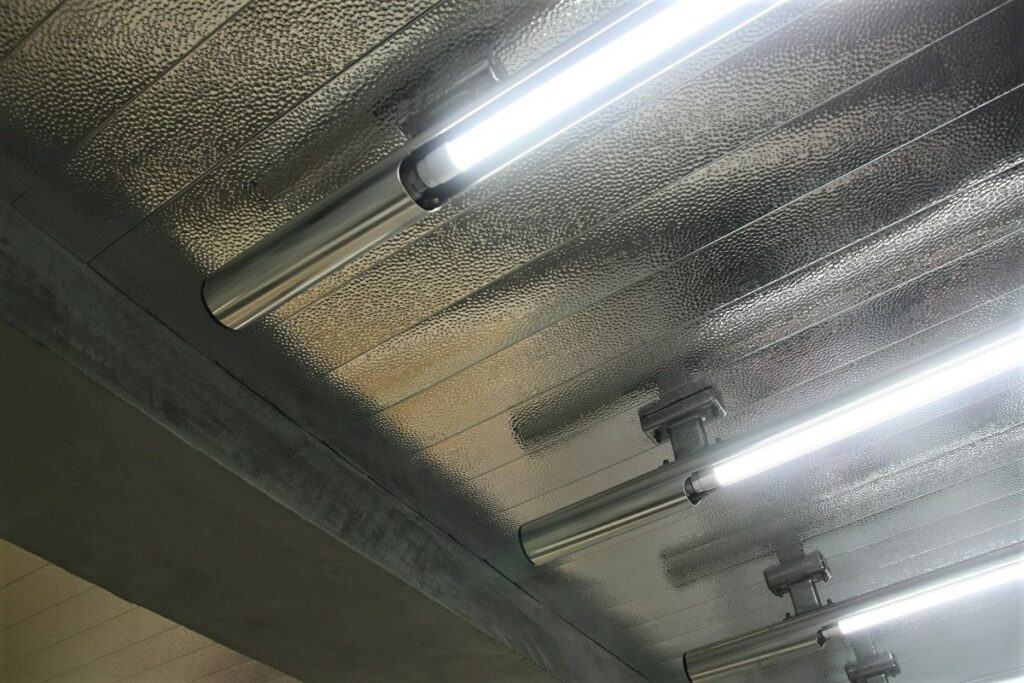
Now that we have talked about aluminium types, alloys, properties, and factors that should be considered when choosing to use aluminium, let’s look more closely at a few common applications and advantages of using architectural aluminum panels and systems.
Discover some tips on how to choose the right aluminium panels
Aluminium panel: suspended ceilings for air conditioning
Among the different uses, aluminium panels are widely adopted for false ceilings. The material is especially suitable for ceilings, both for its lightweight, much lower than steel or copper, and its qualities which make it ideal for virtually infinite designs and, even more, make it perfect for air-conditioned spaces.
The air-conditioned ceilings are based on the radiation effect principle: cooling/heating coils are hidden behind the climate control panel that performs as a heat exchanger. This way, these particular panels end up looking like any other suspended ceiling panel.
Aluminium panels to improve the aesthetics, lighting and noise control
Among the other features that make aluminium panels suitable for false ceilings, one of the most important is, of course, aesthetics. The different heights can be hidden with the aluminium panels, and the building infrastructures, such as piping, wiring and ducts, lighting systems and sprinklers, can be integrated, thus hiding them from view. Acoustical properties make perforated aluminium panels suitable for spaces where noise control is essential, with or without a rear absorbent core. The aluminium surface finishing reflects light, both natural and artificial, and can be used to improve lighting efficiency, thereby increasing the comfort of interior spaces.
Find out the advantages of having one partner for the whole production process
Aluminium composite panels for furniture
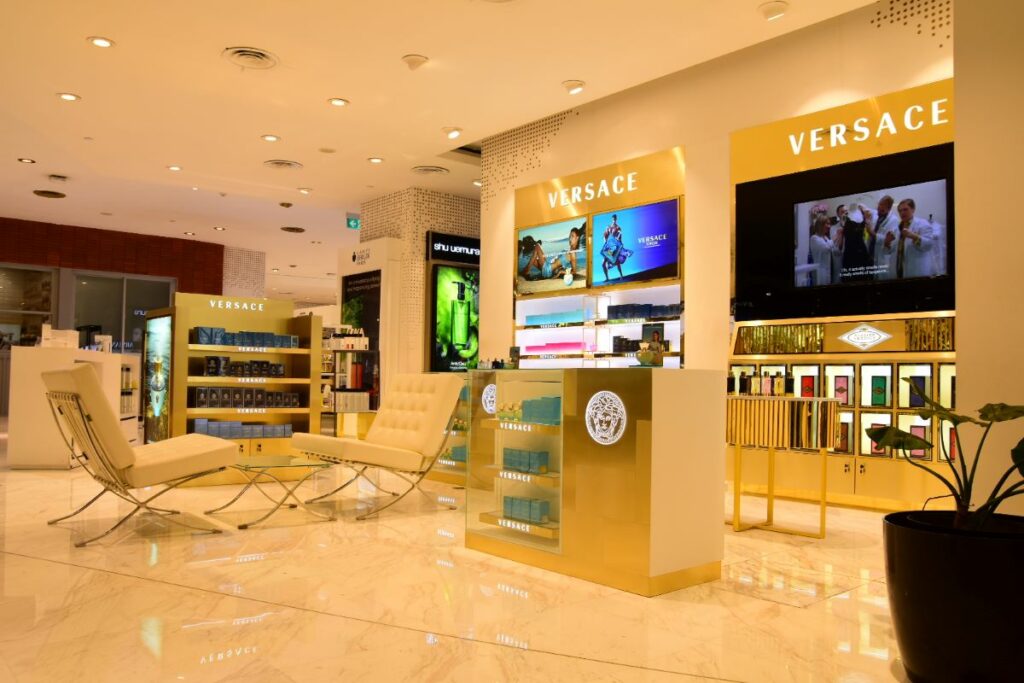
Aluminium panels: recyclable, non-toxic, and resistant
Anodised aluminium, besides being a material with unique aesthetic requirements, features excellent fire resistance. The anodised layer makes it resistant to corrosion, rubbing, and extends its life. Easy to maintain, it is non-toxic and contains neither volatile organic compounds (VOCs), nor formaldehyde, paint, or lacquer. Moreover, it is virtually infinitely recyclable without loss of quality.
